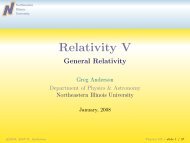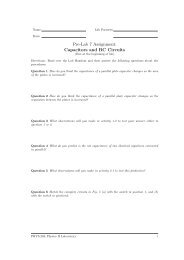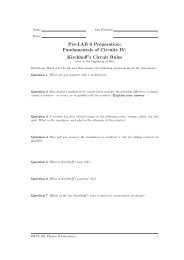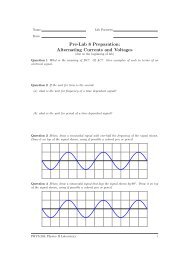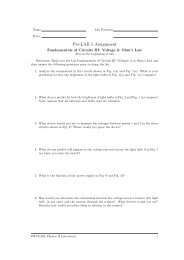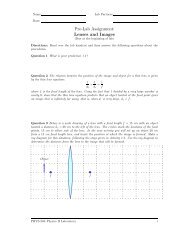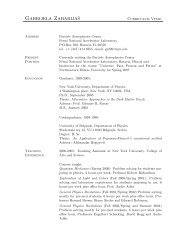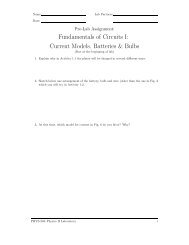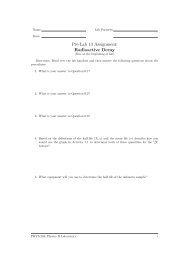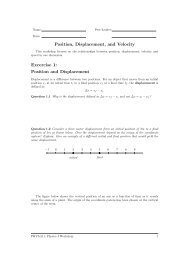Pre-LAB 4 Assignment Fundamentals of Circuits II: Currents ...
Pre-LAB 4 Assignment Fundamentals of Circuits II: Currents ...
Pre-LAB 4 Assignment Fundamentals of Circuits II: Currents ...
Create successful ePaper yourself
Turn your PDF publications into a flip-book with our unique Google optimized e-Paper software.
<strong>Fundamentals</strong> <strong>of</strong> <strong>Circuits</strong> <strong>II</strong>: <strong>Currents</strong> & <strong>Circuits</strong> v 0.3<br />
x<br />
y<br />
x<br />
Two resistors or bulbs are in series if they are connected so that the<br />
same current that passes through each. In the series connection pictured<br />
to the left, there is only one path available for a current which<br />
runs from x to y.<br />
y<br />
Two resistors or bulbs are in parallel if their terminals are connected<br />
together such that at each junction one end <strong>of</strong> a resistor or bulb is<br />
directly connected to one end <strong>of</strong> the other, as at the junctions above<br />
and below the bulbs at the left.<br />
It is important to keep in mind that in more complex circuits, say with three or more<br />
elements, not every element is necessarily connected in series or parallel with other elements.<br />
Let’s compare the behavior <strong>of</strong> a circuit with two bulbs wired in parallel to the behavior <strong>of</strong><br />
a circuit with a single bulb. (See Fig. 6.)<br />
+<br />
−<br />
A<br />
+<br />
−<br />
D<br />
E<br />
(a)<br />
(b)<br />
Figure 6: Two different circuits: (a) a single bulb circuit and (b) a circuit with two bulbs<br />
identical to the one in (a) connected in parallel to each other and in parallel to the battery.<br />
Note that if bulbs A, D and E are identical, then the circuit in Fig. 7 is equivalent to circuit<br />
6(a) when the switch is open (as shown) and equivalent to circuit 6(b) when the switch is closed.<br />
Question 2.1 Explain how you know that the caption <strong>of</strong> Fig. 7 correctly describes the circuit.<br />
<strong>Pre</strong>diction 2.1 <strong>Pre</strong>dict how the brightness <strong>of</strong> bulbs D and E in the parallel circuit <strong>of</strong> Fig. 6 (b)<br />
will compare to bulb A in the single bulb circuit <strong>of</strong> Fig. 6 (a). How will D and E compare with<br />
each other? Rank the brightness <strong>of</strong> all three bulbs. Explain the reasons for your predictions.<br />
PHYS-204:Physics <strong>II</strong> Laboratory 11




